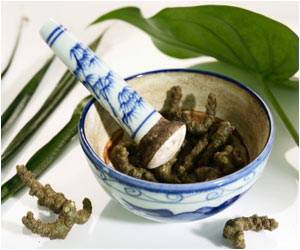Researchers have discovered enzymes in insect-eating plants known as Nepenthes alata, which could help in the development of new antibacterial products.
Researchers have discovered enzymes in insect-eating plants known as Nepenthes alata, which could help in the development of new antibacterial products.
According to a report in Nature News, these enzymes were discovered in the digestive fluids of the carnivorous pitcher plants by Naoya Hatano from the Harima Institute in Riken and Tatsuro Hamada from Ishikawa Prefectural University in Japan.Most plants support their growth by absorbing nutrients such as nitrogen, phosphorus and potassium from the soil. But for those plants that grow in regions where soils lack these nutrients, alternative arrangements have evolved - such as organs that can catch, kill and digest insects, the report said.
Some of these organs develop as spiky mouths that close on unsuspecting insects when they land on them; some develop as seemingly normal leaves that are covered with goo; others, such as the structures sported by the plant Nepenthes alata, are slippery pitchers that function like pit traps.
The fluid at the base of this plant's trap had long been thought to contain digestive enzymes. Though previous research had confirmed this, but exactly which enzymes were present was not known.
Now, the researchers from Ishikawa Prefectural University in Japan have identified seven proteins in the fluid of the carnivorous plant Nepenthes alata.
The research team grew the carnivorous plants in their lab, and collected the fluid from newly opened pitchers to prevent contamination from recently captured insects. Then they used polyacrylamide gel electrophoresis to separate out the proteins, and mass spectrometry to identify what type of enzymes the proteins were likely to be.
Advertisement
According to Hamada, the concept of preservational enzymes in digestive juice may not at first make sense, but these plants consume insects very slowly, so they compete with bacteria that grow on the insect, stealing the nutrients from the plant.
Advertisement
Source-ANI
SRM/M











